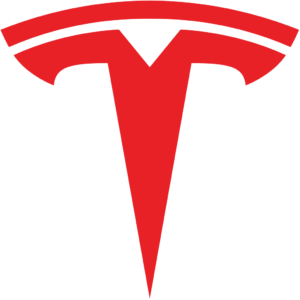How Desperation Stimulates Short-term Rational Thinking…. and Long-term Demise
NOTE: This blog was written in the first two weeks of April, 2020. As such, it cannot and does not anticipate the full effect of the COVID-19 pandemic on the US and global auto industry. Stay tuned…..
In this series of eleven blogs, we will discuss the current situation in Detroit with the traditional “Big 3” – Ford, GM, and Fiat Chrysler (FCAU) – and their upstart rival Tesla. The series will end with specific recommendations as to what the Big 3 must do to survive against Tesla and other electric vehicle manufacturers. The eleven blogs in this series are:
- The Detroit Big 3’s current woes, Part 1
- The Detroit Big 3’s current woes, Part 2
- A brief history of the Big 3’s electric vehicle attempts, Part 1, GM
- A brief history of the Big 3’s electric vehicle attempts, Part 2, Ford
- A brief history of the Big 3’s electric vehicle attempts, Part 3, FCAU and General Big 3 Summary
- What’s so special about Tesla — Part 1, financials and battery performance
- What’s so special about Tesla – Part 2, manufacturing, and cost/time reduction
- What’s so special about Tesla – Part 3, coming Tesla models, etc.
- What’s so special about Tesla – Part 4, Tesla versus emerging competitors
- Why Tesla so successful……..the Company; the Cars
- What’s a poor Big 3 auto company to do now?
What’s so special about Tesla — Part 1, financials and battery performance
While the Big 3 have been standing still or sliding downhill, Tesla continues to press on all fronts with continual innovations in design and customer service, the electric vehicle industry’s most advanced battery and electric vehicle management software, and consistent fast-paced innovation in design and manufacturing. Here, we confine our discussion to the status of Tesla Motors, ignoring for the time being the same successful business picture at Tesla Energy, Tesla Boring Company, and Elon Musk’s other company SpaceX.
Tesla’s Financials
There is a fundamental misunderstanding by Wall Street analysts and investors about Tesla’s business strategy and financials. They cry out that “Why invest in Tesla, they are not making any money!” While it’s true that Tesla is not showing great profits and paying dividends on its stock, Musk seems to be following Jeff Bezos’s example at Amazon (apparently with the same positive results) by re-investing his “profits” in new Tesla products and businesses and in expanding his production capabilities on all fronts.
With that said, Tesla is (perhaps finally) on firm financial footing and seems well-positioned in many analysts’ views to ride out the current virus-induced recession. Tesla’s long-term debt is relatively low, it has ample cash on hand, about $8.8 Billion, in part due to its recent raising of $2.3 Billion in cash in the financial markets. Their stock price and market cap remain more in the range of Apple’s than that of Detroit’s Big 3 companies.
Tesla has enough cash, cash flow, and credit to proceed with building its new Giga Berlin Plant , its US Cybertruck/Model Y plant, all the while freshly expanding its Giga Shanghai plant into Phase 2, and perhaps expanding its Giga Nevada battery plant in Reno. To date each totally new plant seems to require about $2 Billion to complete in Phase 1 form. NB: Musk always has a Phase 2 and Phase 3……for everything!
We certainly don’t know the full extent of Tesla’s order backlog. We do know that it is likely to shrink somewhat in the current economic downturn. We can be confident Tesla’s newly introduced Model Y will outsell the red-hot Model 3’s sales, perhaps cannibalizing some 20% of them. We know Tesla has some 622,000 Cybertruck orders in hand and counting, and over 2,000 orders for their Semi truck. Sales have continued to climb across the Tesla model range, especially as Tesla is gaining more of a global presence. What’s not to like about this picture?
Given Musk’s success record in anything he touches, and considering the scenario above, what bank or group of investors doesn’t stand eager to lend more capital to Tesla? Would you rather invest in Tesla or any of the Big 3 Detroit companies today?
Battery Technology: No electric vehicle produced today (except other Teslas) can match the overall performance of the original Model S introduced in 2012. Performance not only in something as apparently silly as 0 to 60 mph time (turns out Tesla owners really liked that one!), but in terms of range, battery efficiency and energy density, and the entire package that makes up a great vehicle that owners love. People tend to overlook that it is the integrated combination of battery technology, electric motor and drivetrain efficiency, energy management software system, and a quest for continual improvement that, in general, make the Model S and Teslas the top performing electric vehicles on the market today.
Contrast several important performance specifications of the 2012 and 2020 Tesla Model S with the 85 kWh battery pack unless noted:

A considerable part of this improvement is due to fine tuning of battery cell specifications, battery management systems, and electric motor technology. For example, in April of 2019, Tesla changed the front electric motor (in the dual motor versions) of the Model S and X to mirror the Model 3’s dual motor specification, changing the front motor from an induction motor to a permanent magnet switched reluctance motor. This change helped optimize the vehicles’ performance under a variety of driving conditions.
Similar improvements have been made to the Model 3’s performance since 2017. For instance, the long-range rear wheel drive version’s range has been extended from 310 miles to 330 miles, a move from 3.7 miles per kWh to 3.85 miles per kWh. Again, this was at no charge to Tesla’s Model 3 customers.
Tesla has done very well using Panasonic’s 18650 and 21700 cylindrical cell batteries made to their chemical specifications, wherein the 21700 becomes the Tesla’s 2170. The 18650 is used in their Models S and X, and the 2170 is used in their Models 3 and Y. In the Model 3, individual 2170 cells are arranged into four modules of 4,416 total cells wired to deliver a total of 350 volts DC and having a capacity of 230 Amp hours. These four modules form the vehicle’s battery pack that powers the vehicle.
Tesla has been vigorously pursuing the world’s leading battery experts and innovative battery manufacturing technology. In 2019, Tesla acquired San Diego-based Maxwell Technologies because of their unique dry battery electrode chemistry and accompanying manufacturing process. Similarly, in 2019 Tesla acquired Hibar Systems of Ontario, Canada, a leader in high-volume precision manufacturing of small cell batteries.
On the research front, Tesla has worked very closely with Jeff Dahn, a Professor at Dalhousie University in Halifax, Nova Scotia, Canada. Dahn’s research has shown large improvements in battery cell performance using new combinations of electrolyte chemical additives, and single-crystal materials in the battery’s electrodes that avoid microcracking during the battery’s charge/discharge cycles. Dahn’s research findings, combined with Hibar Systems’ and Maxwell’s advanced production process technologies are providing the keys to the major battery technology announcements Tesla will make shortly on their battery technology day.
Industry experts and Tesla technology followers have high but realistic expectations for the advances Tesla will announce – major improvements in battery cycle life that could mean a million mile life battery, in energy density that could increase all Tesla vehicle’s ranges, and in other improvements that could reduce charging times and offer a significant improvement in battery manufacturing cost and production process times. In short, no other electric vehicle manufacturer can match Tesla’s battery performance today, and Tesla is poised to make another huge leap forward in this area. Every other competitor will be left even further behind!
Image courtesy of unsplash.com; Afif Kusama@findracadabra
Blog #7 in this series is: What’s so special about Tesla – Part 2, manufacturing, and cost/time reduction
Your feedback in the form of comments or suggestions are welcome in the comment window. Thank you for following my blogs on this site and for participating in my blogging community.




